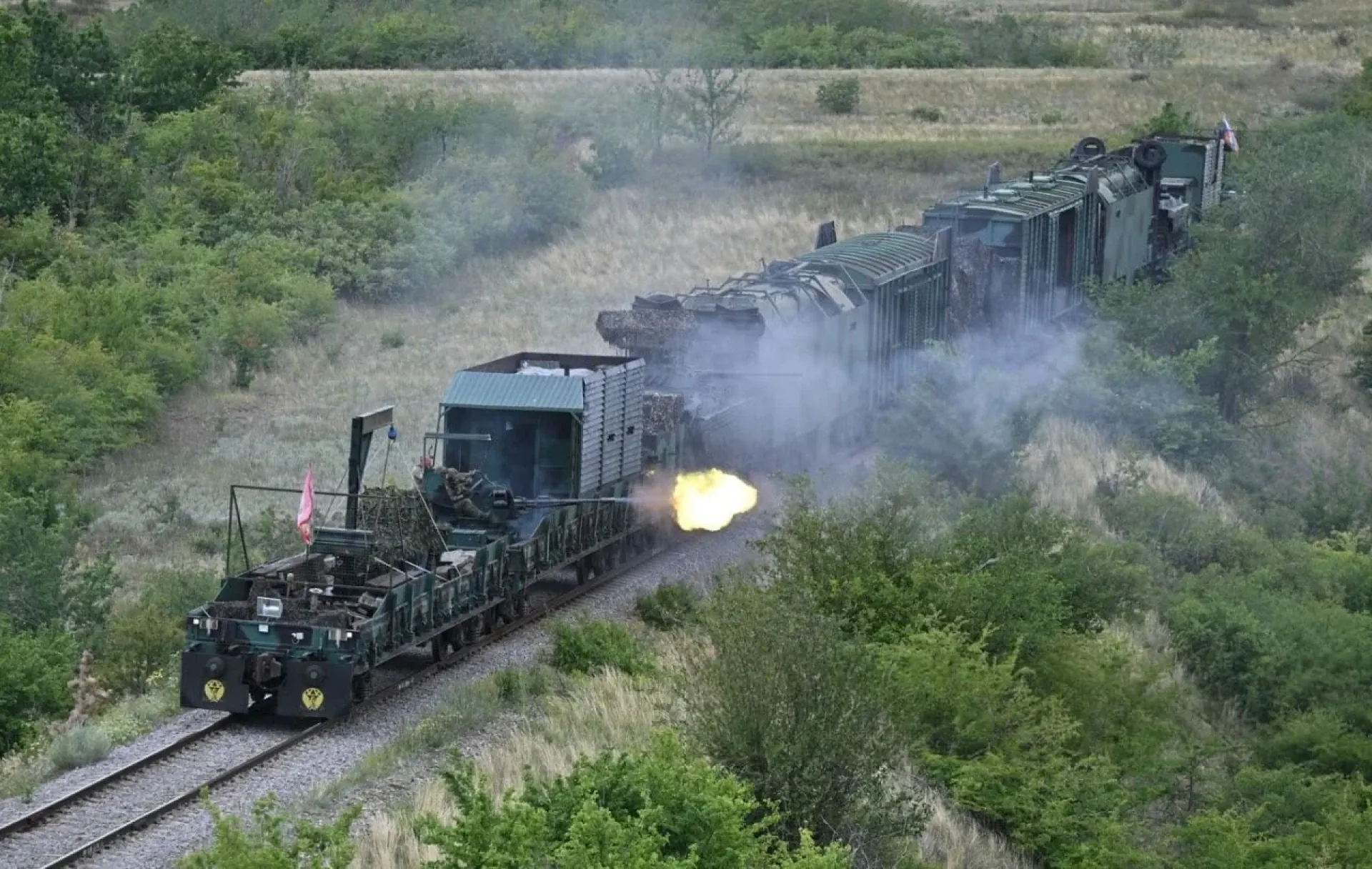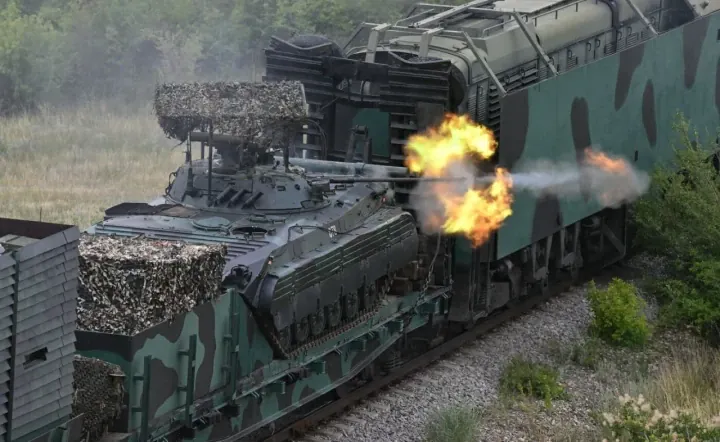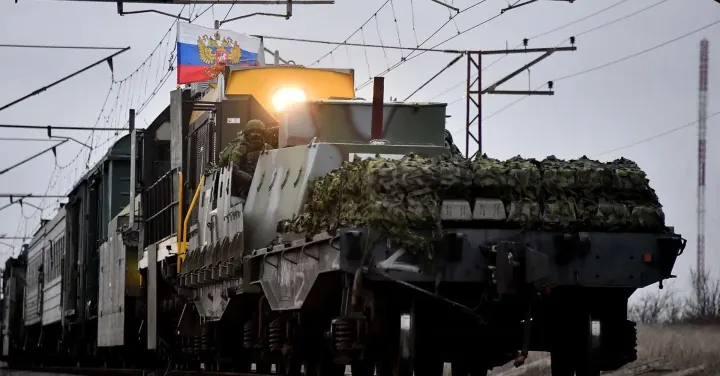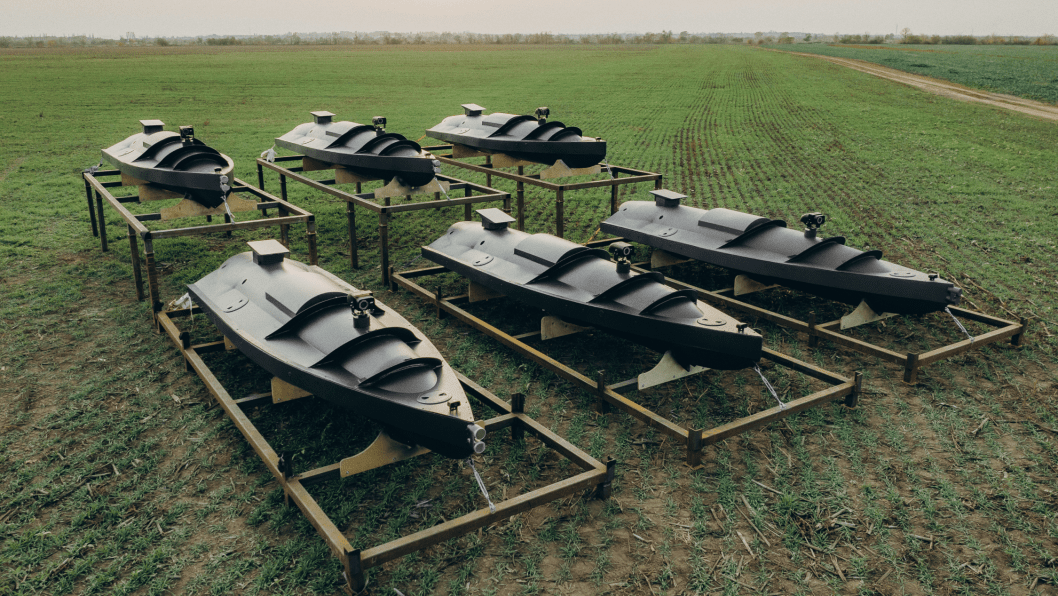- Category
- Latest news
Russia Turns to Armored Trains in Ukraine: Tactical Advantage or Strategic Desperation?

Russia is bringing back armored trains to secure supply lines in occupied Ukraine, merging Soviet-era tactics with today’s battlefield demands.
Russia is continuing to rely on armored trains to secure logistics routes in occupied Ukrainian territory, according to state media reports. These rail-based platforms, a legacy of Soviet-era military planning, have been reintroduced as part of ongoing operations to maintain supply lines and repair infrastructure in temporarily occupied territories.
According to Defense Blog, citing Russian state media, the armored train Yenisey is operating under the command of the Russian military’s “Center” group of forces. Recent footage shows the train conducting what was described as a combat coordination exercise.

The platform is equipped with a ZU-23-2 anti-aircraft gun, several Utyos heavy machine guns, and a BMP-2 infantry fighting vehicle mounted on a flatbed railcar—highlighting its multifunctional role in both transport security and limited fire support.
Russian military sources say armored trains are primarily used to escort logistics convoys and conduct reconnaissance and repair missions along key railway lines. In areas where road infrastructure is degraded or vulnerable to attack, maintaining secure rail transport is treated as a critical objective.
What are armored trains?
Armored trains are heavily fortified railway vehicles designed to operate in or near combat zones. First developed in the late 19th century, they saw widespread use during World War I, the Russian Civil War, and World War II—especially by the Soviet Union.
Though largely obsolete in modern Western militaries, they continue to hold a place in Russian doctrine due to the country’s vast geography and reliance on rail-based logistics.

Typical armored trains include a mix of flatbed cars, troop carriers, command compartments, and artillery platforms. Some are outfitted with engineering equipment to conduct emergency track repairs under fire, while others are configured for reconnaissance and direct engagement.
In modern conflicts, their use is rare due to predictability and limited mobility. However, in Russia’s current military strategy, they offer a mobile, semi-protected platform suited for rear-line operations.
Russia’s known armored train fleet
Russia currently operates at least four armored trains, all of which have been reactivated and modernized in recent years:
Baikal – Based in the Eastern Military District, used for route inspection and infrastructure repair. Armed with ZU-23-2 guns and grenade launchers.
Amur – Deployed in the Southern Military District, configured for armed escort of supply trains. Equipped with twin anti-aircraft guns and machine guns.
Terek – Believed to serve the Central Military District, configured for reconnaissance, troop movement, and medical evacuation.
Yenisey – Currently operating in occupied Ukraine, carrying both air-defense weapons and a BMP-2 infantry fighting vehicle.
🚃Russia’s Defense Ministry shows armored train operating in temporary occupied Ukraine to guard supply lines from drones and sabotage. pic.twitter.com/AlVLngCnnH
— Ivan Khomenko (@KhomenkoIv60065) June 29, 2025
Each train includes armored modules, crew quarters, and space for engineering units and supplies. All are supported by railway troops and sapper teams capable of rapid track restoration in contested areas.
The use of armored trains in 2025 signals both continuity and constraint in Russian military thinking. On one hand, they provide a flexible tool for supporting rail-based operations in dangerous environments.
On the other, their reappearance underscores structural challenges—such as the military’s dependence on fixed infrastructure and limited ability to project logistics over unsecured terrain.
While their effectiveness may be limited, armored trains remain one of the few legacy systems Russia continues to deploy with regularity—an echo of the past repurposed for a war shaped by 21st-century technology.
Earlier, Ukrainian Defense Intelligence drones struck a Russian military fuel train between Levadne and Molochansk in occupied Zaporizhzhia, setting 11 tank cars on fire and damaging a key logistics route. The coordinated attack disrupted fuel supplies to the front lines and is expected to delay rail traffic for at least two weeks.


-ce9a134791207c81306f56ab3d75ffb6.jpg)
-72b63a4e0c8c475ad81fe3eed3f63729.jpeg)
-45ed3be17a7bb74903649ed9258196f8.jpg)

